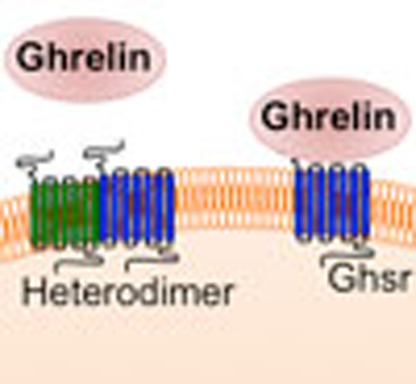- Record: found
- Abstract: found
- Article: found
The orphan receptor Gpr83 regulates systemic energy metabolism via ghrelin-dependent and ghrelin-independent mechanisms

Read this article at
Abstract
The G protein-coupled receptor 83 (Gpr83) is widely expressed in brain regions regulating energy metabolism. Here we report that hypothalamic expression of Gpr83 is regulated in response to nutrient availability and is decreased in obese mice compared with lean mice. In the arcuate nucleus, Gpr83 colocalizes with the ghrelin receptor (Ghsr1a) and the agouti-related protein. In vitro analyses show heterodimerization of Gpr83 with Ghsr1a diminishes activation of Ghsr1a by acyl-ghrelin. The orexigenic and adipogenic effect of ghrelin is accordingly potentiated in Gpr83-deficient mice. Interestingly, Gpr83 knock-out mice have normal body weight and glucose tolerance when fed a regular chow diet, but are protected from obesity and glucose intolerance when challenged with a high-fat diet, despite hyperphagia and increased hypothalamic expression of agouti-related protein, Npy, Hcrt and Ghsr1a. Together, our data suggest that Gpr83 modulates ghrelin action but also indicate that Gpr83 regulates systemic metabolism through other ghrelin-independent pathways.
Abstract
 The murine G protein-coupled receptor 83 (Gpr83) is expressed widely in the brain,
but its physiological role is largely unknown. Here Müller
et al. show that Gpr83 regulates systemic energy metabolism in part by modulating ghrelin
signalling in the arcuate nucleus of the hypothalamus.
The murine G protein-coupled receptor 83 (Gpr83) is expressed widely in the brain,
but its physiological role is largely unknown. Here Müller
et al. show that Gpr83 regulates systemic energy metabolism in part by modulating ghrelin
signalling in the arcuate nucleus of the hypothalamus.
